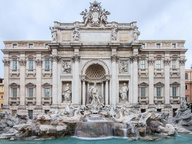Human Brains: It Begins with an Idea
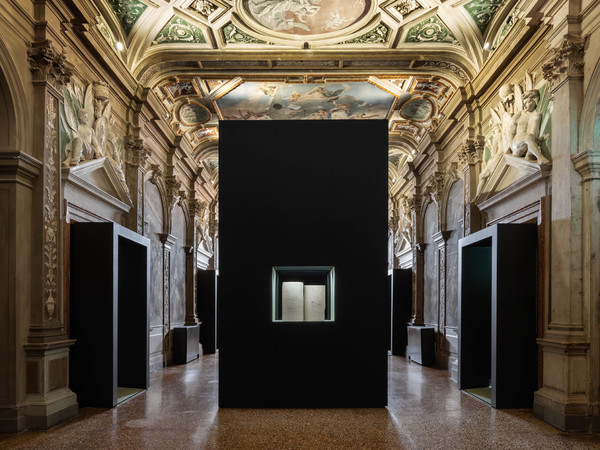
Human Brains: It Begins with an Idea, Fondazione Prada Venezia I Foto: Marco Cappelletti
From 23 Aprile 2022 to 27 Novembre 2022
Venice
Place: Fondazione Prada
Address: Ca’ Corner della Regina - Santa Croce 2215
Times: Mer - Lun 10 - 18 | Mar chiuso
Responsibles: Udo Kittelmann in collaborazione con Taryn Simon
Ticket price: 12 € | 9 €
Telefono per informazioni: +39 041 810 9161
E-Mail info: info@fondazioneprada.org
Official site: http://humanbrains.fondazioneprada.org
“Human Brains” is the result of an intensive investigative process undertaken since 2018 by Fondazione Prada in the field of neuroscience, driven by a deep interest to understand the human brain, the complexity of its functions, and its centrality to human history. The program was developed by Fondazione Prada in collaboration with a scientific board chaired by Giancarlo Comi, neurologist, and composed of Jubin Abutalebi, cognitive neurologist; Massimo Cacciari, philosopher; Viviana Kasam, scientific journalist; Udo Kittelmann, curator; Letizia Leocani, neurologist and neurophysiologist; Andrea Moro, neurolinguist; and Daniela Perani, cognitive neurologist.
The “Human Brains” initiative surveys different fields: from neurobiology to philosophy, from psychology to neurochemistry, from linguistics to artificial intelligence, and robotics. Through a convergence of diverse scientific approaches, the human brain was examined in the plural—as expressed by the title—to underline its intrinsic complexity and the irreducible singularity of each individual.
The project was conceived in four phases. The first one was the conference “Culture and Consciousness”, focused on the study of the highest brain function, in November 2020. The second part was the video lecture series by international scientists, philosophers, and scholars, titled “Conversations,” running from September 2021 to April 2022. The third phase is the exhibition “It Begins with an Idea” taking place in Venice from 23 April to 27 November 2022. The final chapter will be the scientific forum and exhibition project “Preserving the Brain,” scheduled in Milan for September and October 2022. Developed in collaboration with 13 international neuroscience institutions, it aims to stimulate an open and critical dialogue with scientists, experts, and scholars from all over the world on the topic of neurodegenerative diseases, from pathophysiological mechanisms to treatment.
As stated by Miuccia Prada, President of Fondazione Prada, “We are increasingly interested in relevant subjects that impact the lives of everyone, even when those topics are difficult to understand. For a cultural institution whose identity is rooted in the field of visual arts, dealing with science is an intellectual and political challenge: how do we make an exhibition about ideas and knowledge? With the support of the ‘Human Brains’ scientific board, we asked ourselves how to give voice to scientists and researchers, how to get them in contact with a wider audience, how to combine scientific rigor with an approach understandable to all. We are convinced that talking about the human brain means talking about the human being. Focusing on the uniqueness of our brain helps us understand the influence that scientific research has in our lives and the broader progress of culture.”
As underlined by Giancarlo Comi, President of the scientific board of “Human Brains,” “This project aims to shed light on science, on its extreme complexity, on how the evolution of knowledge requires a continuous verification process and how each new acquisition is the premise for the next in a never-ending development. Knowing how our brain works helps us understand ourselves and others. It allows us to participate in a more incisive way in social life, to respect and appreciate the diversity between people and thought. This project also intends to recognize the immense contribution of the neuroscientific community with special attention given to young researchers who, with their creativity, provide a fundamental contribution to the advances of neurosciences.”
In Venice, Fondazione Prada will present the exhibition “Human Brains: It Begins with an Idea” at Ca’ Corner della Regina, from 23 April to 27 November 2022, on the occasion of the Venice Art Biennale 2022. The exhibition is curated by Udo Kittelmann in collaboration with Taryn Simon. Covering three floors of the building, it is the result of a long and in-depth research process carried out with Fondazione Prada and the scientific board.
On the ground floor, a series of projections introduces the audience to the anatomy, physiology, and imaging of the brain, as well as illustrations of how it develops and functions. This in turn presents visitors with the principles, structure, and mystery of the organ at the center of the exhibition.
On the first and second floors, more than 110 items encode centuries of attempts to understand the human brain. Including historical objects, drawings, paintings, prints, and books, the items mark some of the most significant stages of a millennia-long journey of discovery while also illuminating otherwise forgotten chapters of the Mesopotamian and ancient Egyptian ages, the Italian Renaissance, the Japanese Edo period, as well as the last thirty years’ imaging techniques.
The collection ranges from the 3D print of Cylinders of the Sumerian ruler Gudea with cuneiform texts (22nd Century BCE) that report the oldest surviving record of a dream to the Egyptian Edwin Smith Papyrus (17th Century BCE), one of the oldest surviving surgical texts; from a 19th Century copy of the Chinese medical text Huangdi Neijing (3rd Century CE), to a manuscript sheet by Leonardo Da Vinci (16th Century) depicting anatomical drawings and notes; from the first drawings of neurons by Camillo Golgi and Santiago Ramón y Cajal, to a wax anatomical model from the Museo La Specola in Florence (both 19th Century); from the scientific publications of Rita Levi-Montalcini and Viktor Hamburger’s research which resulted in the discovery of the Nerve Growth Factor (1960), to an article published in New Scientist, documenting the first magnetic resonance imaging of a human brain (1978) obtained by Ian Robert Young and Hugh Clow.
Thirty-two international fiction authors have written literary texts in response to the objects, calling forth their latent social, political or personal histories into new forms, expanding the boundaries of our investigative scope. Together objects and stories demonstrate and imitate the capacity of the brain to recollect and reprocess information. The artifacts’ stories were written to be performed by renowned audio book narrator George Guidall in short videos directed by Taryn Simon and produced by Fondazione Prada for the “Human Brains: It Begins with an Idea” project. One voice is projected into multiple stories, languages, geographies, bodies, and realities: an intractable framework problem foundational both to how the brain works and to how the history of neuroscience has been constructed.
At the center of the second floor, thirty-six neuroscientists, psychologists, neurolinguists, and philosophers from five continents are broadcast in an assembly of thirty-two screens. They investigate neuroscientific experiments, and their philosophical and ethical dimensions. Like the brain, The Conversation Machine—videos, interviews and orchestration by Taryn Simon, produced by Fondazione Prada for the exhibition—is a self-organizing system. It responds to itself, continually constructing and assimilating its own order and disorder. In clips excerpted from over 140 hours of interviews, participants appear to listen and respond to each other’s statements. They enter and exit. Objects that refer to their work appear in flashes. Clusters of discussants migrate across the screens. Others sit in sustained, active silence. Like the brain, the conversation morphs according to a logic of prediction and surprise.
Taken all together, the exhibition navigates a history of neuroscientific knowledge-making marked by rigor, breakthrough, and discovery as well as error and uncertainty. It traces the outlines of consciousness, the gaps in scientific research, and what is known and unknown in our understanding of the human brain.
Neuroscientists and Philosophers Yasmin Abufoul, Huda Akil, Anirban Bandyopadhyay, György Buzsáki, David Chalmers, Antonio Damasio, Daniel Clement Dennett III, Stanislas Dehaene, Catherine Dulac, David Erritzoe, Lisa Feldman Barrett, Andre Fenton, Karl Friston, Ali Ghazizadeh, Carl Hart, Suzana Herculano-Houzel, Amadi O. Ihunwo, Erich Jarvis, Kumi Kuroda, Joseph E. LeDoux, Li Zhaoping, Mahmoud Bukar Maina, Catherine Malabou, Eve Marder, Bianca Jones Marlin, Hannah Monyer, Polina Olegovna Anikeeva, David Poeppel, Supratim Ray, Daniela Schiller, Wolf Singer, Patricia Smith Churchland, Mitchell J. Valdés-Sosa, Angela Vincent, Charles Yang, Rafael Yuste.
Authors Ayọ ̀bámi Adébáyọ ̀, Tash Aw, Hanan al-Shaykh, Chloe Aridjis, Mauro Javier Cardenas, Akwaeke Emezi, Esther Freud, Rivka Galchen, Daniel Galera, Paolo Giordano, Uzodinma Iweala, Mieko Kawakami, John Keene, Daniel Kehlmann, Sheng Keyi, Katie Kitamura, Alexander Kluge, Hari Kunzru, Hervé Le Tellier, Michele Mari, Ch’aska Anka Ninawaman, Charu Nivedita, Helen Olajumoke Oyeyemi, Tilsa Otta, Sidarta Ribeiro, Cord Riechelmann, Salman Rushdie, Ekaterina Sedia, Leanne Shapton, Ahdaf Soueif, Maria Stepanova, McKenzie Wark.
Exhibition Research Consultants Stefano F. Cappa, Michele Di Francesco, Stephan Koelsh, Guido Gainotti, Marcello Massimini, Paolo Mazzarello, Maria Concetta Morrone, Giovanni Naldi, Andrea Sereni.
The “Human Brains” initiative surveys different fields: from neurobiology to philosophy, from psychology to neurochemistry, from linguistics to artificial intelligence, and robotics. Through a convergence of diverse scientific approaches, the human brain was examined in the plural—as expressed by the title—to underline its intrinsic complexity and the irreducible singularity of each individual.
The project was conceived in four phases. The first one was the conference “Culture and Consciousness”, focused on the study of the highest brain function, in November 2020. The second part was the video lecture series by international scientists, philosophers, and scholars, titled “Conversations,” running from September 2021 to April 2022. The third phase is the exhibition “It Begins with an Idea” taking place in Venice from 23 April to 27 November 2022. The final chapter will be the scientific forum and exhibition project “Preserving the Brain,” scheduled in Milan for September and October 2022. Developed in collaboration with 13 international neuroscience institutions, it aims to stimulate an open and critical dialogue with scientists, experts, and scholars from all over the world on the topic of neurodegenerative diseases, from pathophysiological mechanisms to treatment.
As stated by Miuccia Prada, President of Fondazione Prada, “We are increasingly interested in relevant subjects that impact the lives of everyone, even when those topics are difficult to understand. For a cultural institution whose identity is rooted in the field of visual arts, dealing with science is an intellectual and political challenge: how do we make an exhibition about ideas and knowledge? With the support of the ‘Human Brains’ scientific board, we asked ourselves how to give voice to scientists and researchers, how to get them in contact with a wider audience, how to combine scientific rigor with an approach understandable to all. We are convinced that talking about the human brain means talking about the human being. Focusing on the uniqueness of our brain helps us understand the influence that scientific research has in our lives and the broader progress of culture.”
As underlined by Giancarlo Comi, President of the scientific board of “Human Brains,” “This project aims to shed light on science, on its extreme complexity, on how the evolution of knowledge requires a continuous verification process and how each new acquisition is the premise for the next in a never-ending development. Knowing how our brain works helps us understand ourselves and others. It allows us to participate in a more incisive way in social life, to respect and appreciate the diversity between people and thought. This project also intends to recognize the immense contribution of the neuroscientific community with special attention given to young researchers who, with their creativity, provide a fundamental contribution to the advances of neurosciences.”
In Venice, Fondazione Prada will present the exhibition “Human Brains: It Begins with an Idea” at Ca’ Corner della Regina, from 23 April to 27 November 2022, on the occasion of the Venice Art Biennale 2022. The exhibition is curated by Udo Kittelmann in collaboration with Taryn Simon. Covering three floors of the building, it is the result of a long and in-depth research process carried out with Fondazione Prada and the scientific board.
On the ground floor, a series of projections introduces the audience to the anatomy, physiology, and imaging of the brain, as well as illustrations of how it develops and functions. This in turn presents visitors with the principles, structure, and mystery of the organ at the center of the exhibition.
On the first and second floors, more than 110 items encode centuries of attempts to understand the human brain. Including historical objects, drawings, paintings, prints, and books, the items mark some of the most significant stages of a millennia-long journey of discovery while also illuminating otherwise forgotten chapters of the Mesopotamian and ancient Egyptian ages, the Italian Renaissance, the Japanese Edo period, as well as the last thirty years’ imaging techniques.
The collection ranges from the 3D print of Cylinders of the Sumerian ruler Gudea with cuneiform texts (22nd Century BCE) that report the oldest surviving record of a dream to the Egyptian Edwin Smith Papyrus (17th Century BCE), one of the oldest surviving surgical texts; from a 19th Century copy of the Chinese medical text Huangdi Neijing (3rd Century CE), to a manuscript sheet by Leonardo Da Vinci (16th Century) depicting anatomical drawings and notes; from the first drawings of neurons by Camillo Golgi and Santiago Ramón y Cajal, to a wax anatomical model from the Museo La Specola in Florence (both 19th Century); from the scientific publications of Rita Levi-Montalcini and Viktor Hamburger’s research which resulted in the discovery of the Nerve Growth Factor (1960), to an article published in New Scientist, documenting the first magnetic resonance imaging of a human brain (1978) obtained by Ian Robert Young and Hugh Clow.
Thirty-two international fiction authors have written literary texts in response to the objects, calling forth their latent social, political or personal histories into new forms, expanding the boundaries of our investigative scope. Together objects and stories demonstrate and imitate the capacity of the brain to recollect and reprocess information. The artifacts’ stories were written to be performed by renowned audio book narrator George Guidall in short videos directed by Taryn Simon and produced by Fondazione Prada for the “Human Brains: It Begins with an Idea” project. One voice is projected into multiple stories, languages, geographies, bodies, and realities: an intractable framework problem foundational both to how the brain works and to how the history of neuroscience has been constructed.
At the center of the second floor, thirty-six neuroscientists, psychologists, neurolinguists, and philosophers from five continents are broadcast in an assembly of thirty-two screens. They investigate neuroscientific experiments, and their philosophical and ethical dimensions. Like the brain, The Conversation Machine—videos, interviews and orchestration by Taryn Simon, produced by Fondazione Prada for the exhibition—is a self-organizing system. It responds to itself, continually constructing and assimilating its own order and disorder. In clips excerpted from over 140 hours of interviews, participants appear to listen and respond to each other’s statements. They enter and exit. Objects that refer to their work appear in flashes. Clusters of discussants migrate across the screens. Others sit in sustained, active silence. Like the brain, the conversation morphs according to a logic of prediction and surprise.
Taken all together, the exhibition navigates a history of neuroscientific knowledge-making marked by rigor, breakthrough, and discovery as well as error and uncertainty. It traces the outlines of consciousness, the gaps in scientific research, and what is known and unknown in our understanding of the human brain.
Neuroscientists and Philosophers Yasmin Abufoul, Huda Akil, Anirban Bandyopadhyay, György Buzsáki, David Chalmers, Antonio Damasio, Daniel Clement Dennett III, Stanislas Dehaene, Catherine Dulac, David Erritzoe, Lisa Feldman Barrett, Andre Fenton, Karl Friston, Ali Ghazizadeh, Carl Hart, Suzana Herculano-Houzel, Amadi O. Ihunwo, Erich Jarvis, Kumi Kuroda, Joseph E. LeDoux, Li Zhaoping, Mahmoud Bukar Maina, Catherine Malabou, Eve Marder, Bianca Jones Marlin, Hannah Monyer, Polina Olegovna Anikeeva, David Poeppel, Supratim Ray, Daniela Schiller, Wolf Singer, Patricia Smith Churchland, Mitchell J. Valdés-Sosa, Angela Vincent, Charles Yang, Rafael Yuste.
Authors Ayọ ̀bámi Adébáyọ ̀, Tash Aw, Hanan al-Shaykh, Chloe Aridjis, Mauro Javier Cardenas, Akwaeke Emezi, Esther Freud, Rivka Galchen, Daniel Galera, Paolo Giordano, Uzodinma Iweala, Mieko Kawakami, John Keene, Daniel Kehlmann, Sheng Keyi, Katie Kitamura, Alexander Kluge, Hari Kunzru, Hervé Le Tellier, Michele Mari, Ch’aska Anka Ninawaman, Charu Nivedita, Helen Olajumoke Oyeyemi, Tilsa Otta, Sidarta Ribeiro, Cord Riechelmann, Salman Rushdie, Ekaterina Sedia, Leanne Shapton, Ahdaf Soueif, Maria Stepanova, McKenzie Wark.
Exhibition Research Consultants Stefano F. Cappa, Michele Di Francesco, Stephan Koelsh, Guido Gainotti, Marcello Massimini, Paolo Mazzarello, Maria Concetta Morrone, Giovanni Naldi, Andrea Sereni.
SCARICA IL COMUNICATO IN PDF
COMMENTI

-
 Dal 27 marzo 2025 al 27 luglio 2025
Milano | Pirelli HangarBicocca
Dal 27 marzo 2025 al 27 luglio 2025
Milano | Pirelli HangarBicocca
-
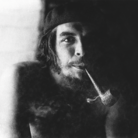 Dal 27 marzo 2025 al 30 giugno 2025
Bologna | Museo Civico Archeologico
Dal 27 marzo 2025 al 30 giugno 2025
Bologna | Museo Civico Archeologico
-
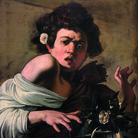 Dal 27 marzo 2025 al 20 luglio 2025
Firenze | Villa Bardini
Dal 27 marzo 2025 al 20 luglio 2025
Firenze | Villa Bardini
-
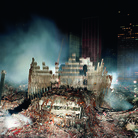 Dal 25 marzo 2025 al 24 agosto 2025
Brescia | Museo di Santa Giulia
Dal 25 marzo 2025 al 24 agosto 2025
Brescia | Museo di Santa Giulia
-
 Dal 22 marzo 2025 al 20 luglio 2025
Ferrara | Palazzo dei Diamanti
Dal 22 marzo 2025 al 20 luglio 2025
Ferrara | Palazzo dei Diamanti
-
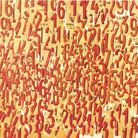 Dal 22 marzo 2025 al 08 giugno 2025
Venezia | Ca’ Pesaro – Galleria Internazionale d’Arte Moderna
Dal 22 marzo 2025 al 08 giugno 2025
Venezia | Ca’ Pesaro – Galleria Internazionale d’Arte Moderna


